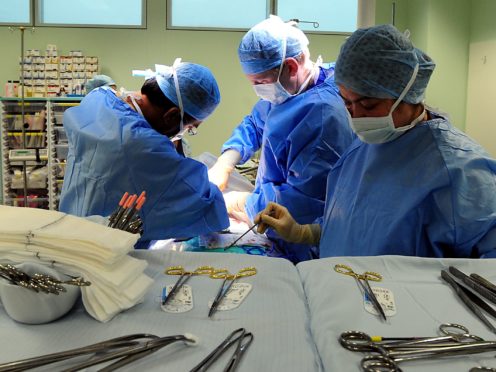
A new stem cell technique could reduce the need for surgery among osteoarthritis patients, scientists believe.
In a first trial on human tissue, scientists at the University of Edinburgh are testing the capabilities of patients’ own cells to repair damaged joint tissue.
Previous trials have studied animal tissue, but researchers are examining the effects of stem cell treatment on discarded hip fragments donated by patients undergoing routine surgery.
The model will be used to develop ways to introduce a patient’s stem cells – unique cells that are able to transform into any other type of cell – into damaged joints.
The team said the stem cells could then transform into cartilage cells, replacing injured tissue.
If successful, the technique could pave the way for treatments that would reduce the need for people having to have invasive surgery.
Five million people in the UK are said to live with osteoarthritis, which damages the tissue between bones known as articular cartilage, leading to joint pain, swelling and disability.
Treatments for the condition – which typically affects knee, hip and ankle joints – are said to have only short-term benefits.
Anish Amin, consultant trauma and orthopaedic surgeon at NHS Lothian and lecturer at the University of Edinburgh, is leading the research.
He said: “Millions of patients suffer from joint pain and disability due to osteoarthritis, including those of working age as well as the elderly.
“The potential to regrow damaged joint tissue from the patient’s own stem cells is very exciting and really is the ultimate treatment solution.
“We are hopeful that our research will come up with promising results.”
The study is funded by the Chief Scientist for Scotland, part of the Scottish Government Health Directorates.

Enjoy the convenience of having The Sunday Post delivered as a digital ePaper straight to your smartphone, tablet or computer.
Subscribe for only £5.49 a month and enjoy all the benefits of the printed paper as a digital replica.
Subscribe